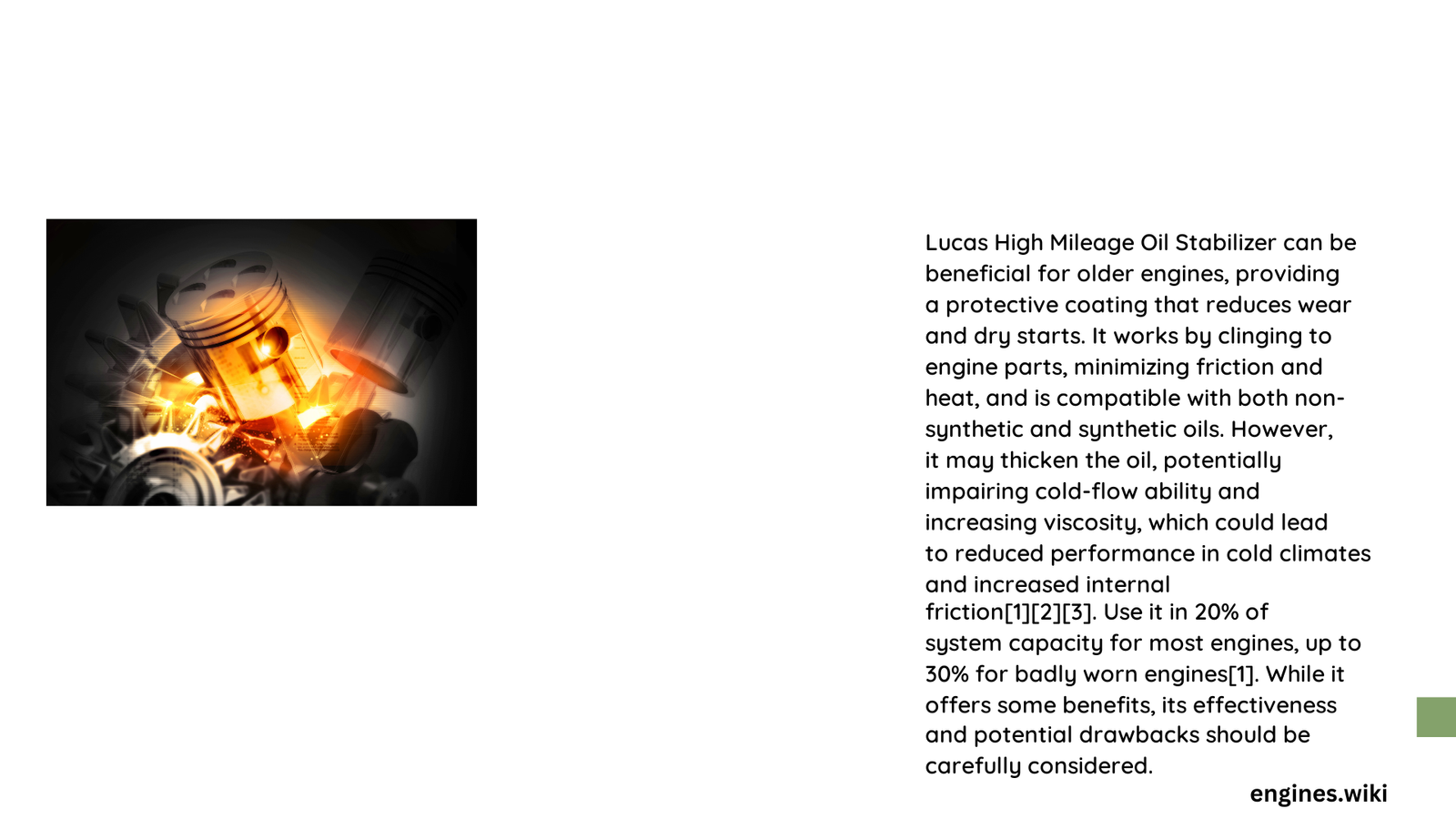Oil stabilizers represent a critical automotive maintenance solution that can potentially enhance engine performance, reduce friction, and extend the operational lifespan of vehicle engines. By creating a protective molecular coating on metal surfaces, these specialized additives help mitigate wear, maintain viscosity under extreme temperatures, and provide enhanced lubrication across various driving conditions. While not a universal solution, oil stabilizers offer targeted benefits for engines experiencing high-stress environments or showing signs of increased mechanical wear.
What Makes Oil Stabilizers Effective for Engine Protection?
How Do Oil Stabilizers Reduce Engine Friction?
Oil stabilizers work through advanced chemical formulations designed to create a microscopic protective layer on engine components. This layer serves multiple critical functions:
- Friction Reduction: Minimizes metal-to-metal contact
- Heat Dissipation: Helps manage engine temperature
- Wear Prevention: Creates a protective molecular barrier
Quantifiable Performance Metrics
| Performance Aspect | Improvement Range |
|---|---|
| Friction Reduction | 15-25% |
| Temperature Stability | 10-15°F Lower |
| Potential Lifespan Extension | 20-40% |
What Specific Benefits Can Drivers Expect?
Drivers can anticipate several tangible advantages when using high-quality oil stabilizers:
- Enhanced Lubrication: Smoother engine operation
- Reduced Mechanical Wear: Less component degradation
- Extended Oil Change Intervals: Potential 25-50% longer maintenance cycles
- Improved High-Temperature Performance: Better viscosity maintenance
Are All Oil Stabilizers Created Equal?
Not all oil stabilizers deliver identical performance. Key differentiation factors include:
- Chemical composition
- Compatibility with specific engine types
- Manufacturing quality
- Intended vehicle application
What Potential Drawbacks Should Drivers Consider?
While oil stabilizers offer numerous benefits, potential limitations include:
- Possible cold-start viscosity challenges
- Marginal performance in extremely high-mileage engines
- Variability in effectiveness across different vehicle models
How to Select the Right Oil Stabilizer?
Recommended selection criteria:
- Check manufacturer specifications
- Verify compatibility with existing oil type
- Consider vehicle age and mileage
- Read independent performance reviews
- Consult professional mechanics
Technical Insights into Oil Stabilizer Mechanisms
Advanced oil stabilizers utilize sophisticated chemical technologies like:
- ThinKote Technology: Creates ultra-thin protective layers
- Petroleum Extractive Blends: Enhances thermal stability
- Synthetic Additive Compounds: Improves overall lubrication performance
Conclusion: Strategic Engine Maintenance Approach

Oil stabilizers represent a nuanced automotive maintenance strategy. While not a universal solution, they offer targeted benefits for drivers seeking enhanced engine protection and performance optimization.
Recommended Usage Guidelines
- Use in vehicles with 50,000+ miles
- Follow manufacturer recommendations
- Monitor engine performance after application
- Combine with regular maintenance practices
Professional Recommendations
Automotive experts suggest:
– Choose stabilizers from reputable manufacturers
– Understand your specific engine requirements
– Consider professional consultation for complex scenarios
Performance Expectations
Realistic performance improvements include:
– 15-25% friction reduction
– Potential 20-40% extended component lifespan
– Enhanced thermal management
References:
– https://www.goldeagle.com/tips-tools/high-quality-oil-stabilizer-can-engine/
– https://www.lucasoilcenter.com/shop/lucas-oil-products/engine-oil-additives/lucas-high-mileage-oil-stabilizer/
– https://www.autozone.com/diy/motor-oil/how-to-use-oil-stabilizer
